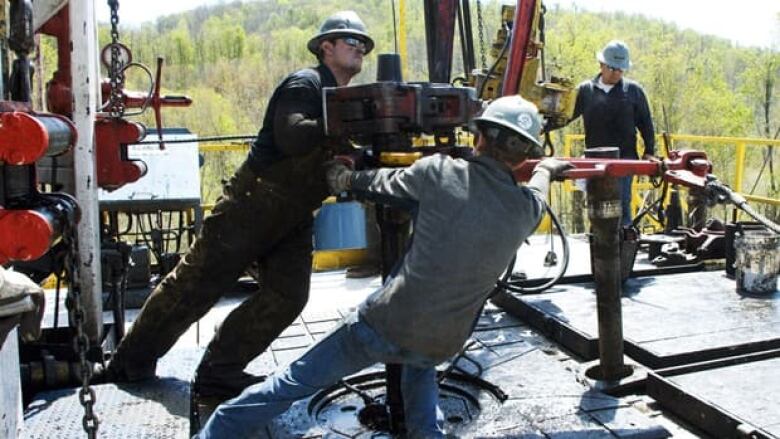Business investment slowing, StatsCan data suggests
Oil and gas spending expected to fall 2.7%

Canadian businesses have pared back their investment plans for 2013 amid signs of softness in the economy, an analysis by Statistics Canada suggests.
Statistics Canada says investment in construction and machinery and equipment should reach $398.2 billion this year, up $6.7 billion, or 1.7 per cent, from 2012.
"This is the slowest increase in investment intentions since the decline in 2009," said TD economist Francis Fong in a commentary, "and is a dramatic pullback from the 8.5 per cent average annual pace of growth between 2010 and 2012."
"The slow pace of gains in investment intentions does not necessarily bode well for the Canadian economy, specifically because business investment is being looked to as a driver of economic growth as households and government shift to restraint," Fong said.
Data released last week added to concern about growing softness in the economy.Decemberretail sales datacamein lower than expected andfigures showedinflation remained tame.
As well, exporters are concernedas a deadlinelooms Friday as the U.S. tries to deal with its budget deficit, andwhen more than $85 billion US in across-the-board spending cuts will be triggered something referred to as sequestration unless lawmakers can negotiate more gradual spending reductions.
The budget cuts could affect the U.S. Customs and Border Protection agency, which has already announced plans to reduce its workforce by roughly 2,750 inspectors. Canadian exportersfear border wait times could increase by up to five hours at larger ports of entry.
Oil prices low
The investment intentions analysis was based on forecasts of public and private organizations, including the housing sector, and comes a day after Statistics Canada reportedcorporate profits grew at their slowest rate since the recessionin the fourth quarter.
The main reason is an anticipated decline in investment reported by the mining and oil and gas extraction sector which accounts for roughly one-fifth of total non-residential investment in Canada which expects capital spending to decline by 2.7 per cent.
The sector has been stymied bya continuing price differential between the world crude benchmark, Brent,and much lower western Canadian prices for the country's biggest commodity export.
However, strong increases are expected in the utilities sector, at 7.7 per cent, and in transportation and warehousing, at 12.8 per cent.
Of total investment, capital spending by the public sector is anticipated to rise five per cent to $88 billion, while private sector investment is expected to edge up 0.8 per cent to $310.2 billion.
In an analysis, David Madani of Capital Economics said the near-term economic outlook is so weak the Bank of Canada will need to consider interest rate cuts.
"Given the tepid global backdrop for exports and the potentially severe housing market correction, we think that financial markets are still underpricing the real possibility that interest rates could fall later this year or early next year," he wrote.
In the private sector total, investment in housing is anticipated to rise 0.2 per cent to $104.7 billion, while investment in non-residential construction is expected to rise 1.4 per cent to $178.9 billion.
Spending on capital machinery and equipment over all is anticipated to increase 3.6 per cent to $114.6 billion, and by 10.4 per cent in the manufacturing sector.
That would be the largest gain for manufacturers since 1997, "a definite positive sign that businesses are turning to productivity enhancements," he said.
With files from The Canadian Press












_(720p).jpg)


 OFFICIAL HD MUSIC VIDEO.jpg)
.jpg)



























































































